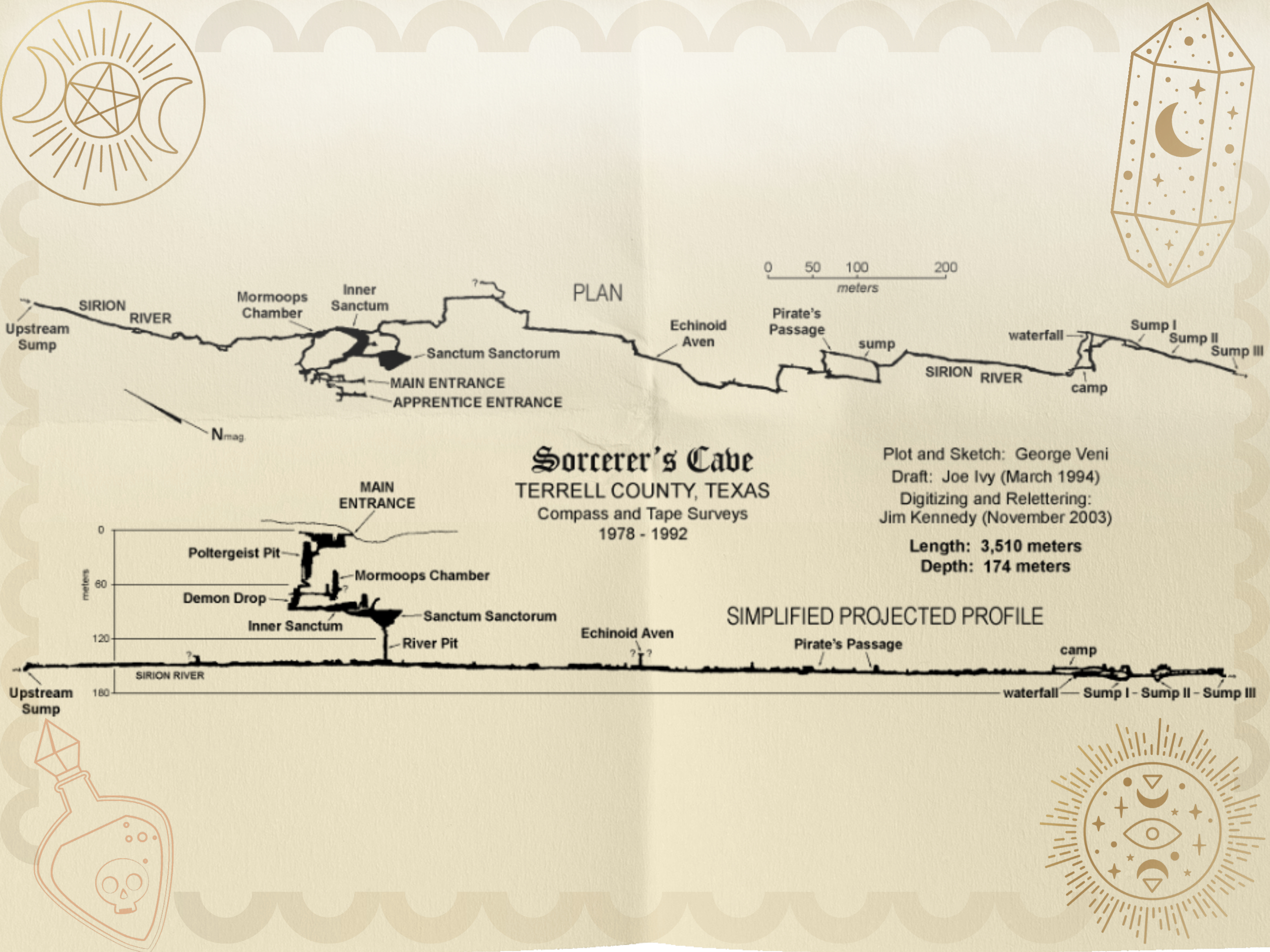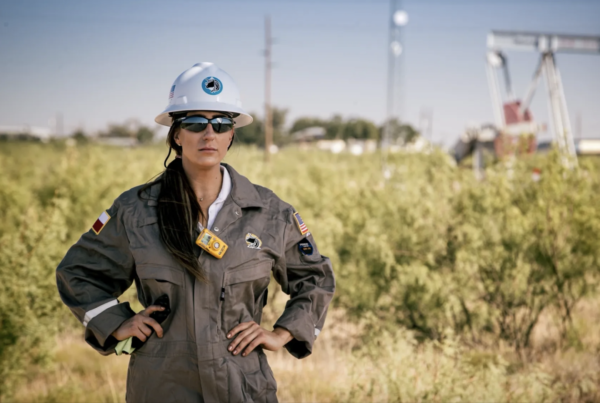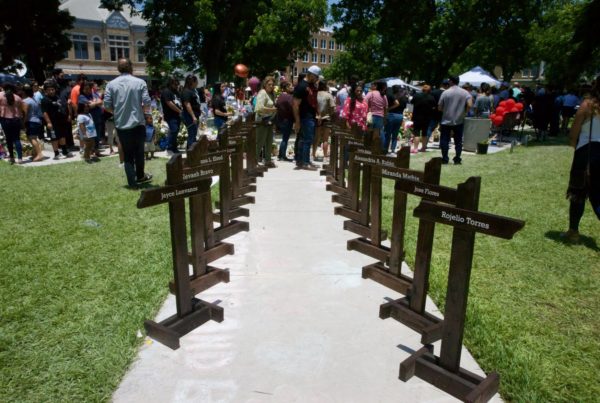The Sorcerer’s Cave is the deepest cave in Texas. It is 567 feet to the bottom, or, as I like to say in Texan, “damnear two football fields deep.” The first part of this cave goes down quickly: Cavers have to negotiate a series of steep, dramatic drops totaling 500 feet, or 50 stories.
At the bottom, a river appears, about 10 feet wide and with a strong flow. It is named the Sirion River because one of its discoverers, Randy M. Waters, was a huge fan of J.R.R. Tolkien. This river running underground in West Texas near Sanderson reminded Randy of Tolkien’s Middle-earth river, and so he gave it that magical name. Unfortunately, the cave is on private land and cannot be accessed without the land owner’s permission, which is hard to come by.
The Sirion River flows a long way through the cave system, as it descends 70 feet or more, and passes over two short waterfalls, before it disappears beneath the cavern wall. The upper part of the river has been explored by divers in wetsuits and scuba gear. One such diver, Dr. Jean Krejca – nicknamed Creature because she is a biologist and her name sounds a little like “creature” – told me that she “followed the river upstream through its narrow passage a good ways” but did not reach its end.
It is astonishing to me that there are fearless people like Jean who will put on wetsuits hundreds of feet underground to pursue a river through dark, constricted passages just to see where they might lead. Scientists at work.
Dr. George Veni, who is said to know more about the cave than anyone and is credited as the discoverer of its record-setting depth, says the water of the Sirion is very clean.
“You could drink from it if you wanted to,” he said, “though to be perfectly safe, you probably shouldn’t.” He said the water at that depth “might have fallen as rain on the Earth’s surface decades ago, or even hundreds of years ago.” The Sirion River, Veni believes, probably flows on another 40 miles into the Rio Grande, and the Sorcerer’s Cave, if fully explored, could be the longest cave in Texas.
Veni remembered fondly the day in 1979 that he was rappelling down the deepest shaft and hollered with delight to his friends above when he realized he had set the depth record for caves in Texas, a record that remains intact today.
Since then, he has been one of the primary mappers of the cave. He was gracious enough to send me his map of the cave, which demonstrates his point that once a cave has a theme, the naming of its features continue to be inspired by that theme. Thus the fantasy literary genre led to other names like Poltergeist Pit, Demon Drop and Mormoops Chamber – ghost-faced bats, which really do exist there. Even another cave in the general vicinity sticks to the theme: It’s called Wizard’s Well.
Bill Steele, another internationally known caver who has explored and helped to map the Sorcerer’s Cave, told me that it is “a fun cave to explore because of its numerous and substantial vertical drops.” He told me that for the “properly equipped vertical caver it’s not dangerous, but for the inexperienced, it certainly would be.”
For Steele, the challenge of Sorcerer’s Cave has got to be minor league, because he’s spent 45 years exploring and mapping the deepest cave in this hemisphere, which is Huautla, down in Oaxaca, Mexico. Huautla is 10 times as deep as Sorcerer’s Cave at 5,118 feet.
Steele says that Sorcerer’s Cave is still important beyond its record depth: Ancient drawings and mortar holes at the entrance show it was used as a shelter, with one item dated to 700 A.D., and human bones found in the Sirion River, almost certainly washed down from above, are the deepest human remains known in North America.
I asked Veni, who is now the executive director of the National Cave and Karst Research Institute in Carlsbad, N.M., why he had chosen a career that would seem, to the layman anyway, to be a dangerous one. He said, “If you follow the rules, the most dangerous part of caving is driving to the cave.”
The basic rules are to never go alone, take several sources of light, wear a helmet with a chin strap, and let people know when and where you’re going. He also stressed the caver’s motto: Take nothing but pictures, leave nothing but footprints, kill nothing but time.
2021 and 2022 are the International Years of Caves and Karst. Celebrate this by visiting one of the many extraordinary public caves we have here in Texas and learning about the significance of caves to all humanity at www.iyck2021.org.













